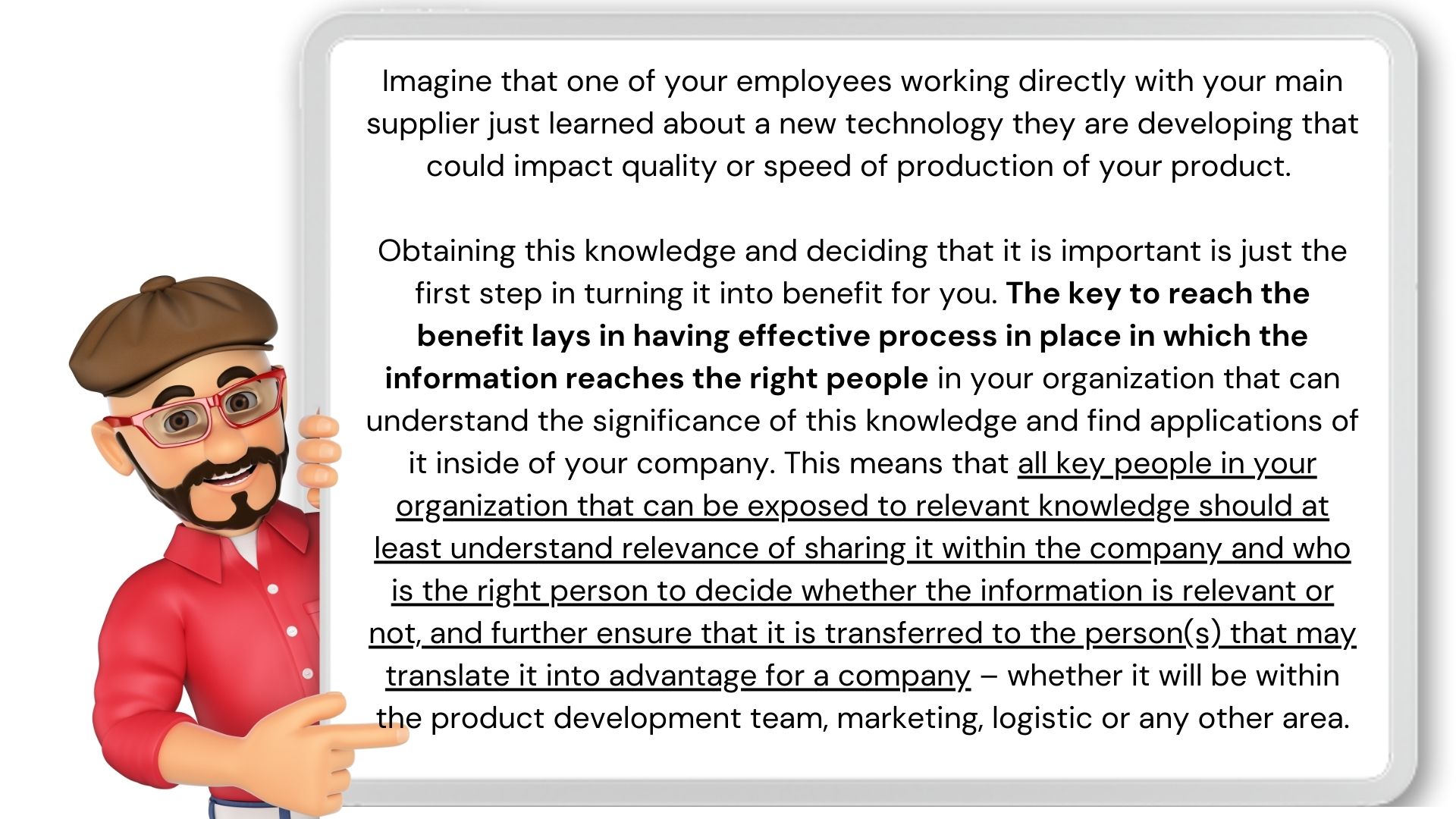|
|
Module 6: Adjusting your organisation to the requirements of Open Innovation |
|
|
Ewa Kopczynska |
|
|
Adjusting your organisation to the requirements of Open Innovation (this is going to be the link) |
|
Upon completing this module, you should be able to: |
|
Absorptive capacity
Developing and implementing your Open Innovation strategy you will identify the resources that you need/wish to acquire from external sources and the correct partners that can provide you with it. Through the Open Innovation approach, you can compensate specific limitations of your SME and engage in more complex and targeted on real needs innovation. To do so, your organization needs capacity to integrate the information obtained from external sources into internal processes and structures[4].
The capacity will require a process for absorbing and integrating of knowledge and external resources. You need to make sure that there is not only alignment between your SMEs and external partners for transfer of resources, but also internally, e.g., between production, purchasing, marketing, finance and sales. Your team, all across the firm, needs to understand the process of innovating in network and benefits of opening the innovation process for your company. Internal communication and training of your employees aiming at building skills needed for innovation projects and specifically innovation projects in network are the tools to prepare your team for absorbing and capitalizing on information and resources from outside.

Image by thumprchgo from Pixabay
You should ensure that your employees understand the process of innovation and the relevance of each of them to get engaged in innovation, as well as the relevance of engaging with external partners for complementing shortages in your resources. All employees should be trained in new ways of searching for information using external sources. Selected ones should develop the ability to identify cooperation partners; to assess external knowledge to separate important from unimportant knowledge[5], and manage the process of integrating it into internal processes, e.g. based on their knowledge of projects and competences across your company, communicate it effectively and in the right moment to the right person that can use the knowledge to transform it into advantage for the company.

Image by thumprchgo from Pixabay
To support the process of transfer and integration, it is beneficial to build links between corresponding departments in partners organisations. Arrange meetings or visits during which employees from your company can meet with their counterparts from partners organisations[6]. It will facilitate and enhance exchange of knowledge and/or effective transfer of resources, and additionally will support building familiarity and trust, which can be of high importance to overcome a common “not invented here” syndrome that could cause resistance of your team to absorb inputs from external sources in your SME.
The ”not invented here” syndrome which is the tendency to avoid using solutions or knowledge that do not originate from inside of the company (or in some case from the closed circle of trusted collaborators), is a common emotional response of resistance to integrating externally obtained knowledge due to:
1/ fear of being made redundant by externalizing work, or
2/ a pride and believe that we could do it better.
It can not only stop implementation of Open Innovation even in case when company can obtain significant benefits of it, but can lead to significant loses when the Open Innovation projects are already in the implementation phase, but the team within the SME ignores the Open Innovation results or, in extreme cases, even sabotages the efforts to integrate results of Open Innovation projects into company operations. Preventing such situation is a key task of the company leader. It is his/her role to ensure a clear vision and strategy for Open Innovation. But also, that it is well communicated and known across all the organization. That everyone is well-aware, why collaborating with external partners is important and beneficial for company objectives and how does it contribute to fulfilling company vision.

The list above is a checklist to assess your organization’s capacity to fully capitalize on the opportunities offered to your SME by Open Innovation strategy. To make Open Innovation into your competitive advantage you should aspire to ensure that answer to all those questions is yes. Of course, every company is unique and some aspects of your operations and needs for external resources will differ. Use the checklist to guide you, but always remember to consider your specific context. For example, if your company focuses on market and/or channels innovation the absorptive capacity will probably not require ability to understand scientific discovery, which may be of key relevance if you are product innovation driven.